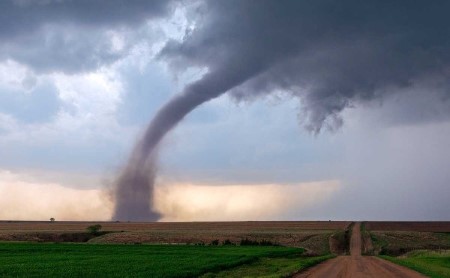Embedded: When Disaster Strikes for People Living With Disabilities
December 14, 2021 | Haley Burrous
 Over the past twenty years, the frequency and intensity of extreme weather events and natural disasters have increased and, by most accounts, this trend will continue. Disasters can impact anyone but past incidents highlight the particularly negative effects on people living with disabilities. Certain disabilities and activity limitations make it more difficult to prepare for and evacuate from an incident, underscoring the importance of planning in advance.
Over the past twenty years, the frequency and intensity of extreme weather events and natural disasters have increased and, by most accounts, this trend will continue. Disasters can impact anyone but past incidents highlight the particularly negative effects on people living with disabilities. Certain disabilities and activity limitations make it more difficult to prepare for and evacuate from an incident, underscoring the importance of planning in advance.
In collaboration with CDC, ASTHO provides funding for 19 disability and preparedness specialists to ensure that the needs of people living with disabilities are comprehensively included in emergency preparedness programs. Read about ASTHO’s specialists Erin Dotten (Michigan), Brooke Riester (New Mexico), and Stephen Heck (South Dakota), who have extensive experience understanding and responding to the needs of people living with disabilities during natural disasters.
Key Considerations for Inclusive Natural Disaster Planning and Response
Communicate Effectively
Develop and distribute accessible resources. Accessible communication is essential for disaster preparedness and response. Information from the federal government, health agencies, and other response groups should be provided in a format that is accessible to the whole of community by using alternative formats and translations. For example, public announcements and emergency updates should include closed captioning and American Sign Language interpretation, if possible. Written documents should be offered in multiple formats, including large print, Braille, and plain language.
Establish lines of communication across agencies and organizations. Communication silos within and across organizations can lead to miscommunication that negatively impacts disaster preparedness and response. Specialists recommend planning meetings specifically to map out responsibilities related to disaster response for people living with disabilities.
Develop and Build Upon Partnerships
Connect with federal, state, territorial, and local partners. One specialist shares how detrimental a disconnect between responding agencies can be during disaster response. Partners for disaster planning can and should represent those directly involved in emergency response, including, but not limited to:
- Community leaders (e.g., churches, shelters)
- Offices of emergency management
- FEMA
- Private and public partnerships, such as utilities and large department stores (e.g., Walmart, Salvation Army)
- Red Cross
Plan, Train, and Exercise With Intention
Establish a mechanism to identify people living with disabilities during a natural disaster. Determine how people living with disabilities will be identified and contacted during a disaster. Some jurisdictions use disability registries or the HHS emPOWER program to help identify people who need additional support during disasters. Other jurisdictions instruct people living with disabilities to directly contact local supports—including independent living centers, disability advocacy groups, and emergency management agencies—to access resources.
Develop plans with input from people living with disabilities before a disaster. State health agencies should ensure that plans including the needs of people living with disabilities are in place and updated frequently.
Offer training and education within the health agency. Develop and host trainings for health agency staff on addressing the needs of people living with disabilities during natural disasters. These trainings should be provided frequently to reach all staff working in emergency response.
Provide the community with opportunities to learn and prepare. Create space for individuals to learn about the scope of work of state health agencies during a natural disaster response to clarify responsibilities. Additional training topics could include personal preparedness, first aid, and CPR. All training programs should be accessible for the whole of community (e.g., hiring ASL interpreters and providing alternative format materials).
Report on Experiences
Assemble lessons learned to use for future planning. Collect community feedback and data throughout a natural disaster response to assess how well the needs of people with disabilities were met during the incident. Specialists report that there is currently a lack of data in some states, making it challenging to identify areas for improvement. When an after-action report is not feasible, regular community feedback should be collected through open forums, meetings, and listening sessions.
Additional Resources
- Emergency Preparedness Publications and Resources (Pacific ADA Center)
- Individuals With Disabilities (FEMA ready.gov)
- Disability and Health Emergency Preparedness (CDC)
- Preparing for Disaster for People With Disabilities and Other Special Needs (FEMA & Red Cross)